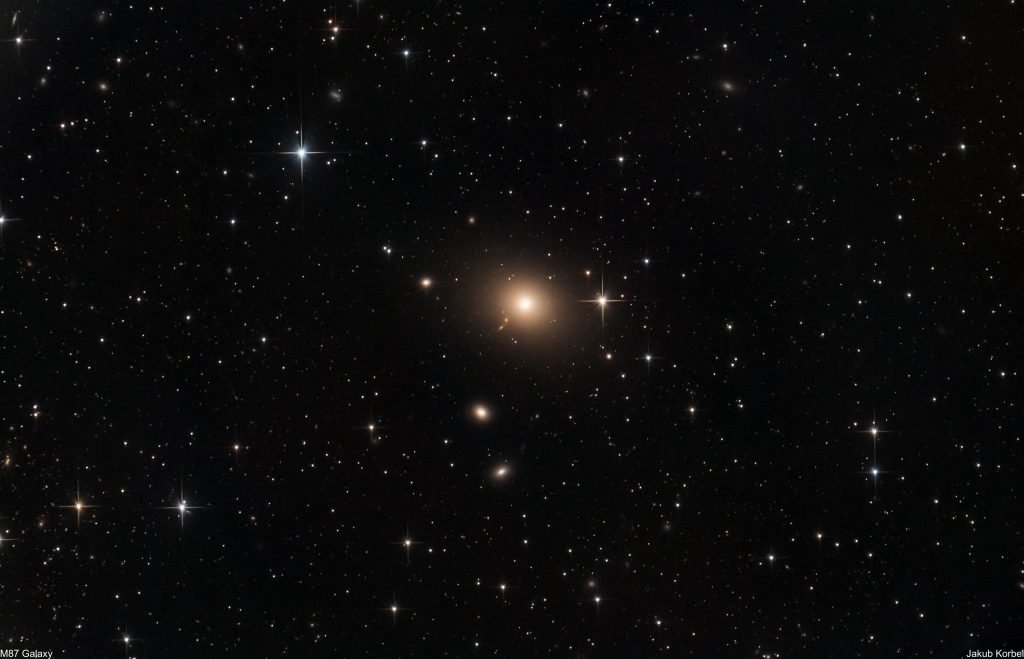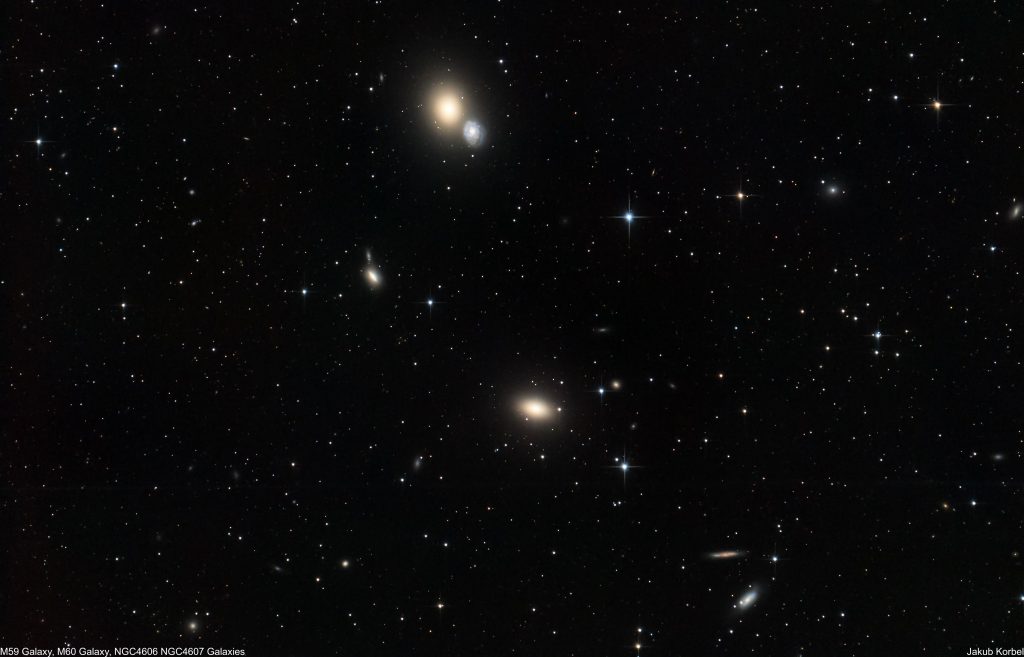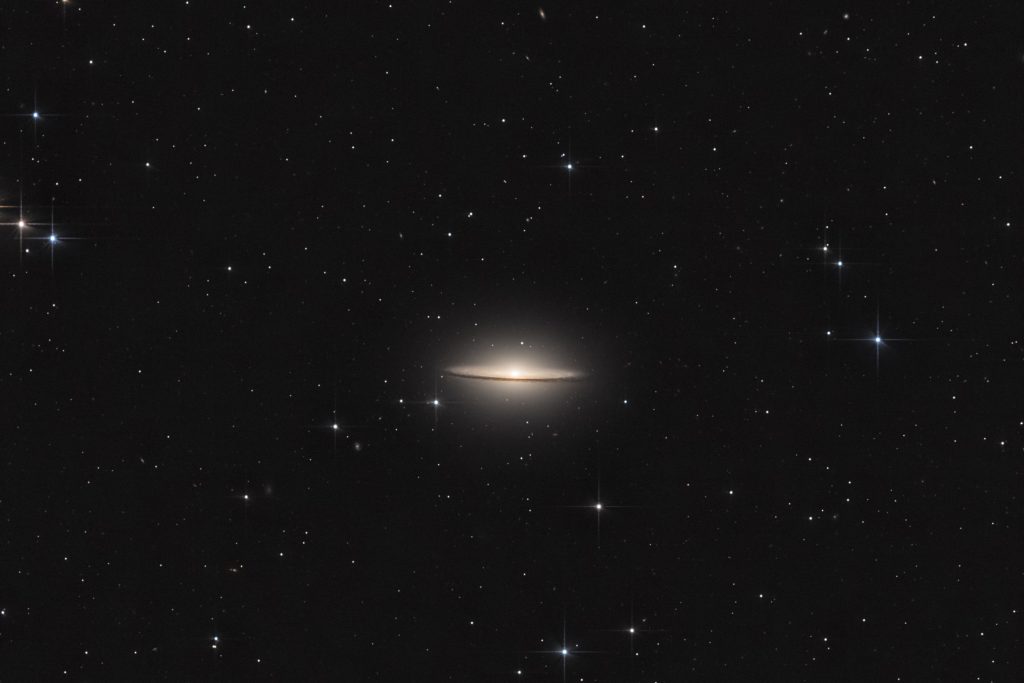I came back from La Palma, disappointed by the weather. Surprisingly, back home was nice Moonless weather, so I took my telescope out and captured Messier 87, which is bright and super massive galaxy in constellation Virgo. It’s one of the largest elliptical galaxy in observable universe and makes the central sport in galactic cluster in Virgo. This galaxy contains a lot of globular clusters, approximately 12000. In comparison our Milky Way contains only 200.
I am really happy that I captured this galaxy this year, because quite recently was the first photo of a super massive black hole in M87 was captured. I think everybody got across the orange picture, which was an effort of many scientists.

Technical details:
| Telescope | Newton 254/1000 mm |
| Aperture | 254 mm |
| Focal length | 1060 mm |
| Mount | Gemini G53f |
| Autoguiding | ZWO 174MM, TS 60/240 mm |
| Camera | ZWO 071 Pro @-15°C |
| Corrector | Explore Scientific HR coma corrector |
| Filters | Astronomik L-1 - UV IR Block Filter |
| Exposure | 55x300s, Gain 94, bin 1x1, |
| Date | 2019-05-06 |


